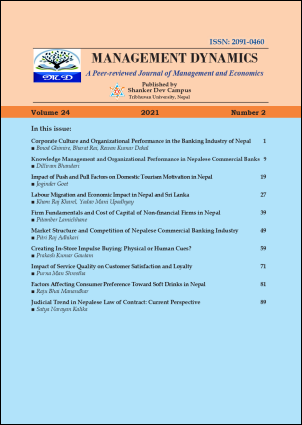Labour Migration and Economic Impact in Nepal and Sri Lanka
DOI:
https://doi.org/10.3126/md.v24i2.50035Keywords:
economic growth, labor migration, Nepal, remittance, Sri LankaAbstract
Nepal and Sri Lanka are recognized as labour-exporting countries. The flow of labor migration in foreign labor markets has been increasing each year. Trends of foreign labor migration started to increase in both countries after 1990. Both countries are categorized under income group countries. Foreign employment has become one of the nation's main household income and foreign exchange earnings sources. After the 1990s, Remittance contributed to foreign exchange earnings and had a favourable impact on the balance of payments, solving unemployment problems, reducing poverty, and boosting economic growth. This study aims to examine the impact of foreign employment on Remittance and the economic growth of these economies. The impact of labor migration on macroeconomic variables (balance of payments, economic growth) has been measured using statistical tools such as correction and regression models from 1995-2019. The study finds that the flow of Remittance has increased and positively impacted macroeconomic variables in the study periods. The study shows that foreign employment has become the main destination for the youths of both countries. The results showed a positive relationship between foreign employment and Remittance and a positive impact on economic growth.
Downloads
Downloads
Published
How to Cite
Issue
Section
License
Copyright © Research Management Cell, Shanker Dev Campus

